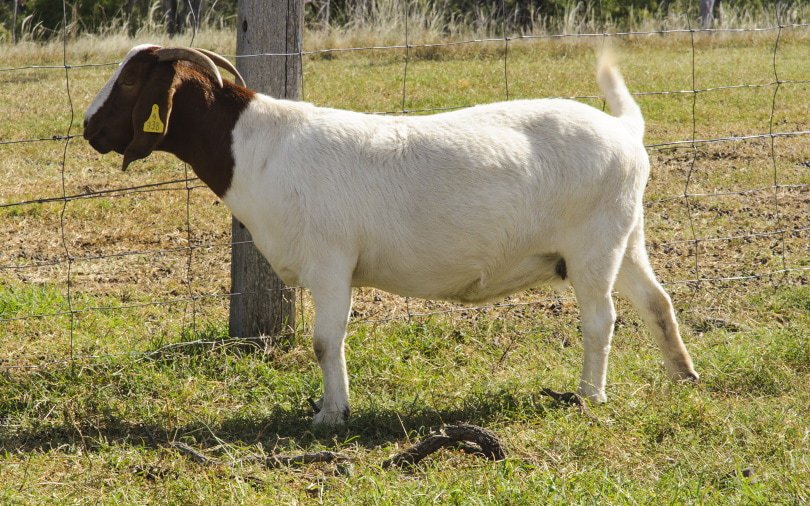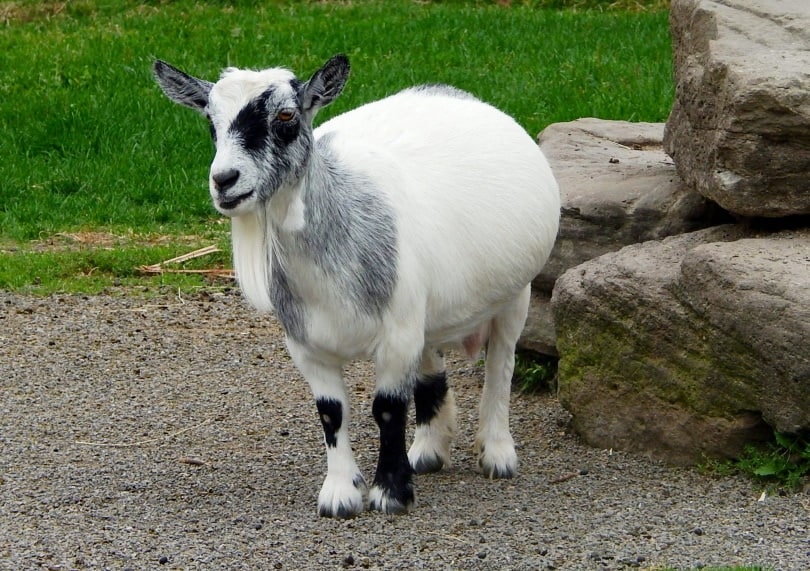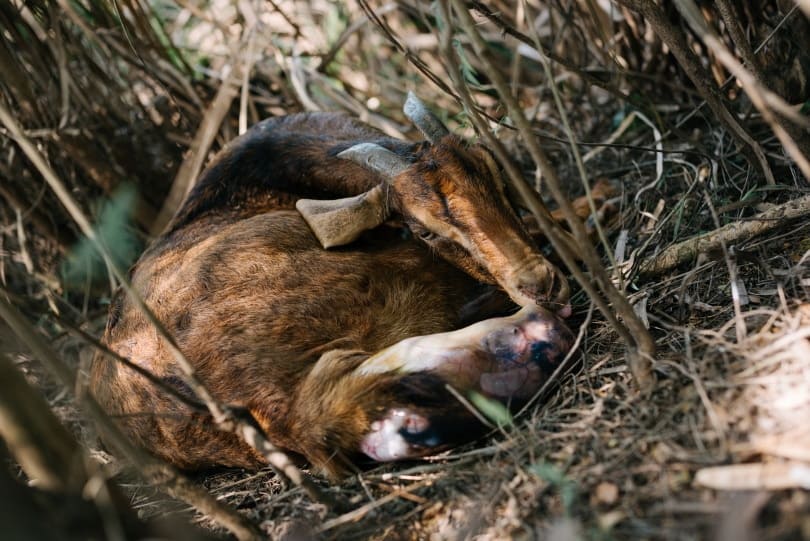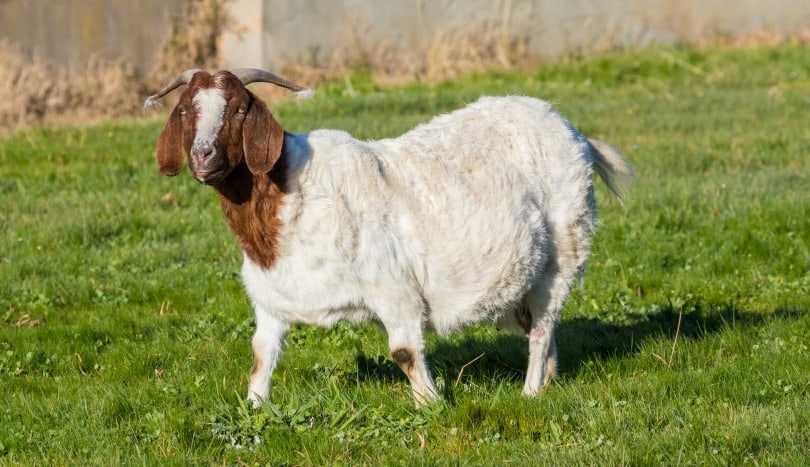If you have your first goats or are just curious about how this whole thing works, you might be wondering about kidding, or the birthing process of a female goat, also called a doe.
We go over certain aspects of the pregnancy of the doe, including how many kids they typically give birth to and the birthing itself. We also look at the different factors that can help determine the number of kids that a doe can have.

How Many Kids?
So, how many kids do goats have?
On average, a doe will have anywhere from one to five kids during one pregnancy. That said, it’s actually quite rare for a doe to have five kids or just one; they tend to have two or three, with twins being the most common.
There are several factors at play here, including how many pregnancies the doe has had and their health and breed.

Goat Breeds
There are about 200 different breeds of domestic goats, so we’ll go over just a few of the breeds and the number of kids that they typically have.
The Guinness World Record for the largest litter of goats is held by a Nigerian Dwarf Goat by the long and rather unusually named, Miller’s Fairywood MP Angelica from Arizona. She had seven kids in one litter in 2019!
Large Goats
The popular Boer Goats are among the largest goats and are primarily raised for their meat. These goats are capable of giving birth about three times within two years and tend to have two kids at each pregnancy.
Most of the large goats, including dairy goats, tend to average twins and can be bred by 7 months of age.

Small Goats
Small goats, such as the Nigerian Dwarf and pygmy breeds, tend to have an average of three kids for each pregnancy. Most small goats average triplets during a pregnancy, but they are also capable of birthing four and even up to six kids for each pregnancy.
They can breed all year, but the traditional time is usually in the fall and the spring. Like dairy goats, small breed does can start breeding by the age of 7 months.
While many breeds of goats are capable of breeding by 7 months of age, it isn’t always the best idea to do so. In fact, it’s recommended to only breed does once they reach 1 year of age. Many does can continue breeding until they are 12 to 14 years of age.

A Little More About the Numbers
During a doe’s first pregnancy, she is much more likely to only have one kid and will then go on to have two or more kids at subsequent pregnancies.
One of the primary reasons goats tend to average two kids is that they only have two teats, which makes milking a challenge with more than two. This also means that it’s common for the doe to only accept two of her kids, which means bottle feeding for the rejected offspring.

How Often Can a Doe Become Pregnant in a Year?
The gestation period for the doe can be between 145 and 180 days, but the average stands at 150 days, or about 5 months. Technically, this means she could be pregnant two times a year, but this is generally not recommended.
One litter of goats per year is best because it’s much healthier for both the doe and the kids. The birth weight of the kids tends to be much lower the more births there are.
What Are the Signs of Pregnancy?
Your vet can check to see if a doe is pregnant with a blood test, but there are a few physical signs that will tell you if your doe is pregnant.
- Does that are pregnant for the first time will have a swelling of the uterus.
- Goats used for milk production will start producing less milk.
- A doe that is 2 weeks pregnant will have a noticeably tighter stomach.
- At about 3 months, you’ll observe movement from the kids.
It’s always possible that by feeling your doe’s uterus, you’ll be able to count the number of kids, but the best method to know for certain is with an ultrasound conducted by your vet.

What Happens During Labor?
Every goat is different and will react differently during labor. The first stage of labor might take about 12 hours, and the doe will start becoming restless. They also tend to prefer to be left alone during this stage.
The second stage occurs when the doe starts to push the babies out of her uterus. This process usually only takes about 30 minutes. If it seems to be taking too long, there might be a problem. This is also the stage where a vet might need to be called in if the kid isn’t in the right position or if there’s another issue.
The kid is born head and front hooves first and emerges still in the amniotic membrane, which should naturally rupture but sometimes needs help. The doe will usually stand up just before the kid is out completely.

Once the Kids Are Born
The kids will stand almost immediately, although they will be a little shaky, and they will probably sneeze. Any siblings are usually born within 2–3 minutes of each other.
They will immediately look to suckle, and as long as they find their mother’s teats within 24 hours, they will survive and should remain quite healthy. Weaning occurs naturally in about 2 weeks to 1 month.
Any kids that look as though they are in trouble, like being lethargic, separated from their mother, bleating for no reason, or obviously cold, need intervention and help. The owner should warm them up and bottle-feed them separately.

Conclusion
There is no fast-and-hard rule regarding the number of kids that a female goat will have. It could be one, or it might even be seven (although this is unlikely)! Sometimes, birthing can go smoothly, while other times, the doe will need the help of the owner or a vet.
The most important thing for any goat owner is to be present during the kidding, to ensure that you don’t need to intervene and help the kids find the teats if necessary. The experience will be memorable, to say the least.
Featured Image Credit: Ross Gordon Henry, Shutterstock
